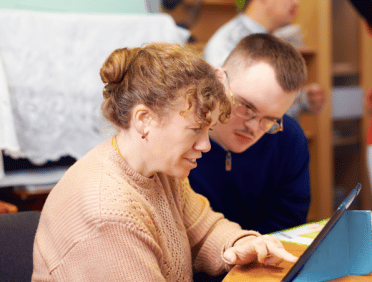What is safeguarding in early years settings?
Safeguarding in an early years setting is the policies, procedures and regulations that are there
to protect children. This protects them from maltreatment, abuse and anything else that may
impact their health, well-being or development.
Following the rules set out by safeguarding documentation means that children will not only be
able to live a happy and safe life but that they also receive high-quality care too. Something that
they should always receive whilst they are at school or in an early years setting.
The Importance of Establishing Comprehensive Safeguarding Policies
Whilst many of the aspects of safeguarding should be common sense, and therefore come to
those in an Early Years setting without the need for written guidance or training, there is always
going to be a chance that you may forget it or may not get things entirely right.
This is why it is a good idea to ensure that you establish comprehensive safeguarding policies.
These policies ensure that every single person within the setting understands what is expected
of them. They can identify the key things that they need to do and that they should not be doing.
Another reason that safeguarding policies are important to take the time to write, is because
they help those who are writing them to think about and consider their setting and how the
safeguarding rules apply to the particular setting.
They may have some aspects of the policy that are obvious, however, there are also those that
they might not instantly think of and having the chance to write them down can make the
difference between not having them in place and being able to recognise their importance.
Understanding the Concept of Safeguarding in Early Years
Safeguarding is important in any form of educational setting, or setting where people are
vulnerable to being abused or harmed. However, when it comes to early years settings,
safeguarding becomes even more important.
To understand this more we take a look at what early years settings are and why safeguarding
is so vital for them to have in place.
Defining Early Years and Its Significance
Early years settings are there to provide education and childcare for children. They can work
with children from as young as six weeks of age, right up to when they head to primary school,
at the age of 4/5 years old.
There are several early years settings that children can attend. These include:
Day nurseries
Playgroups
Out-of-school care
Childminders
Summer clubs
Creches
Early years settings may be a larger setting that has many children of all ages in their care,
often split into different rooms that relate to the age of the children in there. Or, they may be
smaller settings that only cater for a certain age bracket (usually preschool children who moving
into school next).
Whilst it is not compulsory to attend early years settings here in the UK. It has been found that
they can provide a whole range of benefits to the children that attend them. They help them to
develop their language skills, which in turn improves the way that they communicate.
Early years settings can also help a child to improve their emotional and social development
too, they learn how to make friends, how to regulate their own emotions and how to recognise
and appreciate the thoughts, feelings and emotions of others around them too.
The main thing to remember when it comes to early years settings is that they will be able to
provide a foundation that will allow a child to learn and build throughout the rest of their time in
education.
Key Principles and Goals of Safeguarding in Early Years Settings
The main thing to remember about many of the children that attend an early years setting is that
they cannot speak out for themselves. If they see, hear or experience something that they do
not like or that is harmful to them in some way, then there is little to no way that they can
express this, particularly those children that are much younger.
This means that it is vitally important that those adults that work within an early years setting,
understand and recognise the key principles or goals of safeguarding.
Overall, the main principles of safeguarding are:
That a child’s needs should always be put first
That children are helped and supported from an early age to ensure that the issues do
not damage them
That safeguarding is the responsibility of everyone in the setting and everyone should
work together.
When it comes to early years settings it is important to follow their safeguarding principles:
That children learn best in a positive and enabling environment
That children should be recognised as being unique. That they can be encouraged to be
capable, self-assured and confident in themselves
That children learn in different ways and at different rates
That children learn best from positive relationships around them
The Role of Early Years Practitioners in Safeguarding Children
The practitioners who work in the early years are a vital step in safeguarding. They are the ones
who are there to protect the children and ensure that they do not come to any harm whilst they
are in the setting.
They are also there to work with the children and recognise any signs that the child may be
abused or at risk of being abused. In whatever form that comes in. This can be incredibly
important to pick up on when the child is unable to disclose or share that the abuse or neglect is
happening to them at that time.
Legislation and Regulations for Safeguarding in the UK
To ensure that safeguarding is a focal point in early years and educational settings here in the
UK, we have legislations and regulations that are designed to ensure that the rules are followed.
Here we are going to look at three of the main ones that early years settings in particular need
to be aware of and follow.
The Children Act 1989 and its Relevance to Early Years Settings
The Children Act 1989 was created to prove a framework that all settings need to follow to
ensure that they have robust safeguarding and child protection systems in place.
It reformed the law that related to children and ensured that they were all treated as individuals,
with human rights. This is regardless of their age.
Although a main part of the act was there to ensure that children are protected and kept safe, it
also has a focus on ensuring that families stay together, so long as the children in that family
are safe.
Within early years settings, The Children Act 1989 outlines the roles and responsibilities of
those working within the setting, ensuring that the children that are in their care are well cared
for and that they are protected as much as possible.
The Children Act 2004: A Framework for Safeguarding Children’s Welfare
The Children Act 2004 is an expansion based on the 1989 Act. It reinforces the importance of
those who work with children to know the duty that they have to safeguard children, protecting
their welfare.
The main focus of this particular Act was to put in place the key things that can help to ensure
that children are as safe, and as happy as possible whilst they live, learn and grow up in Britain.
It also set up Children’s Trusts, which is a body that is not affiliated with Health and Social
Services or other government agencies. However, they do work alongside them to ensure that
families who need help have a sense of trust in those agencies who are trying to help them.
The Early Years Foundation Stage (EYFS) Framework and Safeguarding
Requirements
The EYFS Framework was created to set a standard that all early years providers in the UK
must follow and meet to ensure that the children that they care for and look after, learn and
develop as well as they can.
The Framework also outlines how children should be kept safe whilst they are in the setting and
what needs to be done to promote that they have a healthy life inside and outside of this setting
too.
Finally, the Framework outlines the main skills and knowledge that children should have learnt
and be exposed to whilst in an early years setting, which will then set them up for their start at
school.
Developing Effective Safeguarding Policies and Procedures
All early years settings need to have their safeguarding policies and procedures drawn out.
These are the guidelines that are there to help staff to know what is expected of them to keep
the children in their care as safe as possible.
If you are responsible for creating these policies and procedures, then here are some of the key
things that you should focus on to ensure that they are effective in what they set out to do.
Creating a Child-Centered Safeguarding Culture
One of the main things to focus on when creating safeguarding documentation is that you
should always have the interests of the children in your care first. Of course, some of the
aspects of safeguarding are to protect the adults within the setting, but first and foremost it is the
children that should be the focus.
The Importance of Putting Children’s Well-being First
You should always focus on the well-being of the children. What is it that they need? What
should your staff do to ensure that these needs are met? What should the parents, guardians
and other caregivers that are responsible for those children do?
Involving Parents and Guardians in the Process
Parents and guardians must have some say in what the safeguarding documentation should
say, or at the very least be aware of what it says. That way they can know what is expected of
them and the types of support that are available to them via the setting, or the local authorities.
Designing Clear Safeguarding Policies
Any policies that you create for your setting must be presented and designed in a way that
makes them as clear as possible. That way, no one can misunderstand what is within the policy
and what they need to do to ensure that they meet what is expected of them.
Setting Boundaries and Guidelines for Staff and Visitors
The important thing to remember about safeguarding is that it doesn’t just apply to your staff,
but also anyone who visits your premises or setting. Boundaries should be set to ensure that
both staff and visitors know what they should and shouldn’t do when it comes to the children in
the setting,
Addressing Online Safety and Internet Usage
Safeguarding covers a variety of things within an EYFS setting, one example of this is online
safety and internet usage. It should be very clear how you expect the internet to be used within
your setting and how this can help to keep everyone in the setting safe.
Implementing Robust Recruitment and Training Processes
It is one thing to write up policies and procedures that relate to safeguarding in your setting,
however, you also need to make sure that those in the setting understand what is expected of
them and those around them. This should come right from the moment that they are recruited.
Safer Recruitment Practises and Background Checks
It is important that when someone is recruited to work in an early years setting that they are
checked before being given the job. The DBS is the most common background check, which
ensures that the person has no criminal background history that should be a cause of concern.
Ongoing Safeguarding Training for Staff
Staff should always be trained on the key aspects of safeguarding when they first join a setting,
however, this is not something that should then just be ignored. Safeguarding training should be
repeated regularly, just to ensure that everyone who is in the setting knows what is expected of
them.
Recognising and Responding to Child Protection Concerns
One of the most important aspects of safeguarding is being able to recognise possible child
protection concerns and knowing what is the most appropriate way to respond to them. This is a
part of training and should be focused on within not only your policies but also the training that
you deliver to your staff too.
Identifying Signs of Abuse or Neglect
It is important to be able to identify what is a sign of either abuse or neglect. The sooner that
these signs are identified, then the sooner the child could be given the help that they need to be
safe.
Understanding Different Types of Abuse (Physical, Emotional, Sexual, and Neglect)
There are four main types of abuse that children can be exposed to. These are physical,
emotional, sexual and neglect. Physical abuse can be assault, hitting, slapping, pushing and
inappropriate restraint or physical sanctions. Emotional abuse can be threats, lack of contact,
blaming, control and intimidation. Sexual abuse can be sexual assault, indecent exposure, use
of inappropriate language in front of the child, or witnessing sexual acts. Finally, there is neglect,
which is when the basic needs of the child are not being met.
Indicators of Possible Abuse in Early Years Children
The indicators that a child is being abused can be different depending on the nature of the
abuse that they are suffering, as well as the child themselves. However, more often than not,
the first indication is that the child is acting in a way that is not usual for them. This could be that
they seem to be introverted, keeping themselves to themselves, or it could be that they are
becoming louder and more disruptive in their classroom setting.
Responding to Suspicions or Disclosures
If you notice that children may be acting in a way, or showing signs that they could be a victim of
abuse, then you are going to want to make sure that you follow the set-out procedures that
relate to safeguarding within the setting. This is also true if you receive a disclosure from a child,
or another adult inside or outside the setting.
Immediate Actions to Protect the Child
The first thing that you should do when you receive a disclosure, is make sure that the child is
safe. Action on safeguarding concerns should be immediate. You should not wait it out to see
what happens, as this can make things even worse over time. This is particularly true if you
believe that the child is in real danger and you are concerned that they could be injured or
abused even further.
Reporting Procedures to the Appropriate Authorities
In the first place you should always report your concerns within safeguarding to your Designated
Safeguarding Lead, they can then take it further and set the next steps in action. They will know
the right authorities to notify that there are concerns relating to a particular child and ensure that
the child is protected and that the right process is followed.
Creating a Safe Physical Environment
Children must feel and be safe when they are in their educational settings. The physical
environment should be designed in a way that is not only going to allow them to explore and
learn, but to do so as safely as possible too. This means that health and safety is a key aspect
of safeguarding.
Ensuring a Secure and Child-Friendly Setting
Children should not be able to exit your setting without an adult there. This means that you need
to have appropriate security measures in place to help this to happen.
Health and Safety Measures in Early Years Settings
There must be time taken to make sure that the correct health and safety measures are put in
place in the setting. The toys should be safe for the children to access, there should be no
possible harmful items or chemicals around and the environment should be designed in a way
that is going to keep the children as safe as possible whilst they are still able to move around
and explore.
Managing Risks and Hazards in the Environment
Part of working in an early years setting is recognising the main risks and hazards that can be a
part of the setting. These may be things that are there from the very start, or, they may be risks
and hazards that appear over time. All staff must know how to recognise a potential hazard and
how they can then move on and report it to those who can take action on it.
Establishing a Safeguarding Oversight and Review Mechanism
When you work in an early years setting you are going to want to make sure that you always get
things right when it comes to safeguarding. However, there is always a chance that you can
make a mistake and that oversights are made.
This is why it is important to have an oversight and review mechanism as a part of your
safeguarding procedures and policies.
Designating a Designated Safeguarding Lead (DSL) and Their Role
The Designated Safeguarding Lead or DSL is a key part of the safeguarding policy within your
setting. They are responsible for safeguarding and child protection within your particular setting.
They are the person who is alerted of any concerns and will then take this concern further and
investigate it fully, working with relevant authorities to protect the child concerned.
As well as this, the DSL is there to ensure that the files, policies and procedures that relate to
safeguarding and child protection are as up-to-date and robust as they can be.
Conducting Regular Safeguarding Audits and Reviews
To ensure that the safeguarding policies are as robust as possible within your setting you need
to conduct regular audits and reviews to make sure that the safeguarding practices that you
complete in your setting are going to protect children.
These audits look at the main aspects of safeguarding in your setting, what could be your key
risk factors and highlight areas that you may want to change now and in the future too.
Learning from Incidents and Updating Policies Accordingly
As we have already mentioned, we always hope that there are not going to be any safeguarding
incidents in our settings, however, things do sometimes happen, even when we have planned
for them.
It is important to see any incidents as a chance to learn and to then make sure that you utilise
them as a learning tool. Think about what happened, identify the areas where it went wrong and
then update your policies and procedures to ensure that this issue does not happen again in the
future.
Collaborating with External Agencies and Partners
Whilst much of the safeguarding work that you may do in your setting is just that, in your setting,
several external agencies and partners will need to be worked with to ensure that children are
as protected and safe as possible.
Some of these may be in the early stages of a safeguarding concern, whilst others may be as
things progress and the children need more help to stay safe.
Working with Local Safeguarding Children Boards (LSCBs)
The Local Safeguarding Children Boards are there to safeguard and promote the children in the
area. They were created as a part of the Children Act 2004 as a response to the death of
Victoria Climbie. They are the overarching part of the safeguarding process and take the
responsibility for ensuring that the local authorities and the multi-agency approach work in the
favour of the children.
Engaging with Social Services and Other Relevant Agencies
To protect children as much as possible and work with the adults that care for them, there are
going to be a variety of agencies that need to be present. One example of this is social services,
however, other agencies can also play a part.
It is important that early years settings can recognise who these agencies are, what they can do
and how best to work with them, so that the children who need to be protected, can be
protected.
Promoting Multi-Agency Cooperation for Child Protection
One of the main things that has to work within safeguarding procedures is a multi-agency
approach. When these many agencies involved in safeguarding do not communicate with one
another, this is when incidents can occur and the children can be put in a place of harm.
When they do work together, often using a system such as CPOMS, which allows them to work
together to highlight areas of concern and build an entire picture, this is giving the child the best
chance of being protected.
Challenges and Best Practises in Safeguarding Early Years Children
Whilst safeguarding is important, some key challenges can come with the idea of safeguarding
children, particularly in early years setting. It is important to be able to recognise what these
challenges are and how you can try to avoid them from being an issue.
If you do come across them and find a way to work through them, then it is a good idea to share
best practices, so that others can also learn from your mistakes or your issues.
Navigating Confidentiality and Information Sharing
Confidentiality is key when you work with children, however, when it comes to safeguarding
there can be circumstances whereby you need to share information that relates to the child or
their home environment.
It can be tricky to navigate between these two things. You are going to want to make sure that
as much information is shared as possible, but you want to always protect the child and their
family. Only disclosing the information that you need to share, particularly in those early stages.
Balancing Child Protection with Inclusion and Diversity
It is vitally important that we recognise that some cultures have their approaches to parenting
and care for children, however, this can sometimes mean that diversity and inclusion can be
hard to balance against child protection.
We want to ensure that children are safe, but it can be hard to know exactly what cultural
approach should be respected and what should be highlighted for safeguarding as a concern.
The thing to do is to try and learn as much as possible about the background of the child that
you are concerned about and ensure that you can identify what is the “norm” and what could be
a sign that something needs to be highlighted.
Ensuring Continuous Improvement and Adaptation
One of the most important aspects of safeguarding is to make sure that all staff in the setting is
aware of what they need to do and what they can change. Improvement and adaption are vital
to ensure that children stay safe and that their needs are met.
If we start to become complacent when it comes to safeguarding, and we don’t try to learn, then
we are never going to be able to find the best way to keep children safe and ensure that it stays
that way.
Safeguarding of Children Training
- Learn Q’s Safeguarding Children Level 1 is an introductory course that provides a basic understanding of safeguarding vulnerable children. It covers the concept of safeguarding, the importance of safeguarding, the legislation in place to protect vulnerable children, the signs of abuse and how to avoid them, and how to respond when a vulnerable child discloses they are being abused or neglected. This course is suitable for anyone who works with vulnerable children, including managers, supervisors, employees, and volunteers at all levels.
- Learn Q’s Safeguarding Children Level 2 course, on the other hand, is a more advanced course that builds on the knowledge gained in Level 1. It provides a more in-depth understanding of safeguarding, including recognising abuse, the responsibilities of different safeguarding roles, effective communication, and how to handle concerns and incidents related to safeguarding. This course is designed for those with additional safeguarding responsibilities, such as those who work in hospitals, general practices, nursing homes, care homes, or domiciliary care, as well as in religious organisations and community organisations.
Overall, while both courses cover the essential knowledge and skills needed to safeguard vulnerable adults, Safeguarding Children Level 2 provides a more comprehensive and detailed understanding of safeguarding, which is important for those who have additional safeguarding responsibilities.
These courses are ideal for those who work in hospitals, general practices, nursing homes, care homes, domiciliary care, as well as in religious and community organisations. By completing this course, you will be better equipped to handle safeguarding concerns and to ensure the safety and well-being of vulnerable adults.
At Learn Q, we are committed to providing high-quality training that meets the needs of professionals across a range of industries. Our Safeguarding Children courses are designed to provide you with the knowledge and skills you need to excel in your role and make a real difference in the lives of vulnerable children. Sign up today and take the next step in your career!












